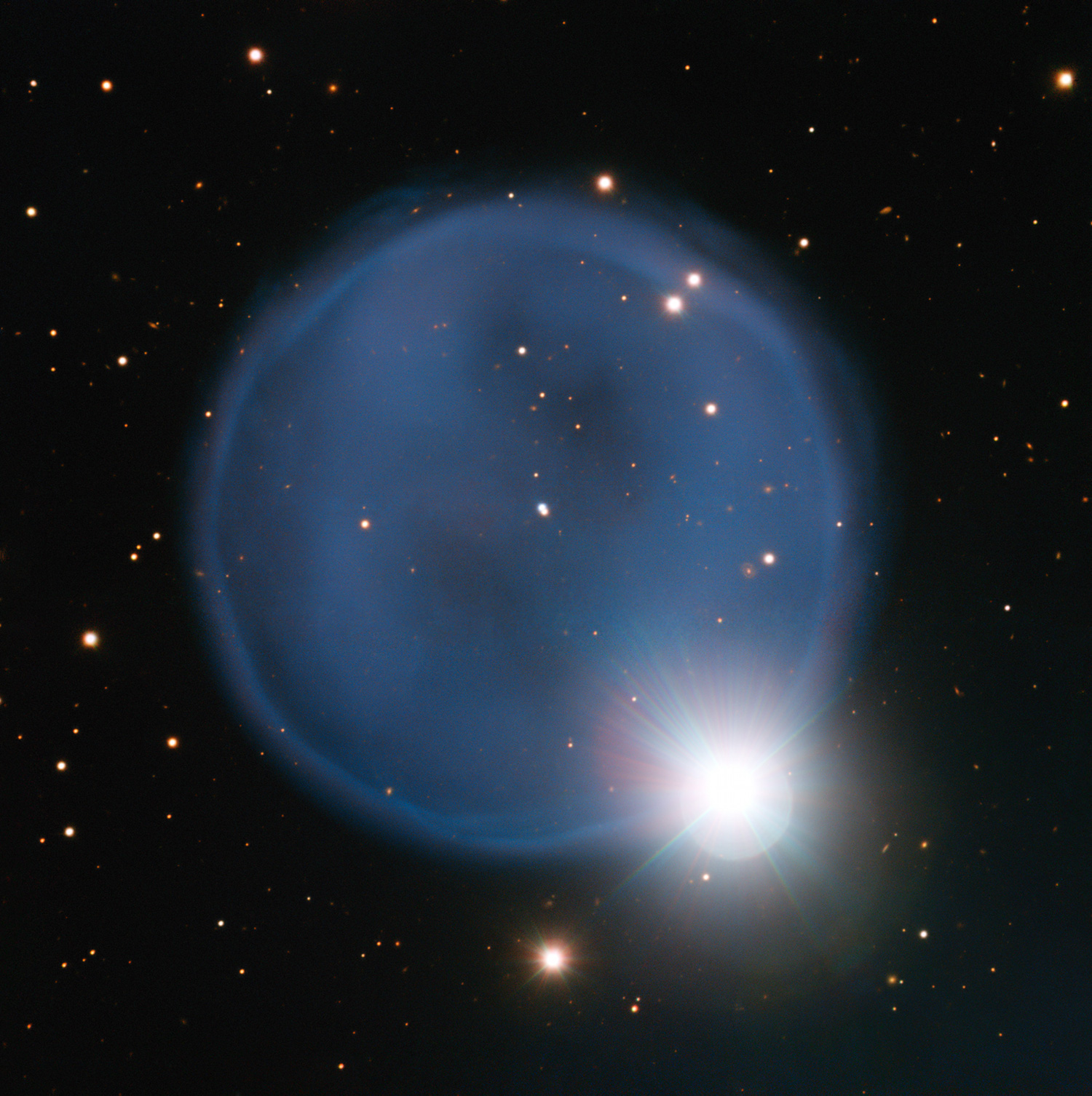An ‘Engagement Ring’ in Space
A nebula and a star line up perfectly in the sky.

Astronomers using ESO’s Very Large Telescope in Chile have captured this eye-catching image of planetary nebula Abell 33. Created when an aging star blew off its outer layers, this beautiful blue bubble is, by chance, aligned with a foreground star, and bears an uncanny resemblance to a diamond engagement ring. This cosmic gem is unusually symmetric, appearing to be almost perfectly circular on the sky. Image by ESO
Well, it looks like the universe “put a ring on it.”
This photograph, a composite of images taken in March 2013 by the European Southern Observatory’s Very Large Telescope in Chile, reveals a singular view of the planetary nebula Abell 33 appearing to cross with the star HD 83535, creating what resembles an engagement ring. The two, however, are not actually part of the same formation, according to Jeremy R. Walsh, an astronomer at the Observatory who studies nebulae.
“Complete coincidence,” he says. The star is quite close to earth, situated about 750 light years away, while the nebula is located much farther from our planet—about 2,500 light years.
See that pearly speck near the middle of the circle? That’s the nebula’s progenitor star.
“The star that formed this nebula probably had about the mass of the sun,” says Walsh. As the star grew older, it gradually heated up while shedding its gas. At some point that star became so hot that its intense ultraviolet light caused the gas to start to glow, forming a nebula.
The nebula’s annular edge—the thin, brighter band that appears to touch HD 83535—probably consists of the gases that remained after the original star threw off a lot of mass in a short amount of time when it was first forming the nebula, according to Walsh. “We call it a shell ejection,” he says.
While the Abell 33 seems nicely rounded, Walsh warns that, “we might just be looking at this nebula from a direction where it looks circular.” Viewed from another angle, Abell 33 could appear more extended or elongated.
Walsh estimates that Abell 33 has been a nebula for about 20,000 years, while the star at its center is probably around 8-10,000 million years old.
The star HD 83535 is a hotter dwarf star compared to our sun, burning at about 10,000 degrees Celsius, says Walsh. And while it’s closer to earth than the nebula, it’s probably too faint to be seen with the naked eye.
If you have a telescope, point it toward the constellation Hydra in the night sky, and you can see the “diamond” (the nebula is too faint to view with a small telescope).
This post was updated on November 12, 2014. An earlier version stated the following (regarding how the nebula formed): “At some point, the star built up so much heat that it ignited the gas, forming a nebula.” The sentence was amended to: “At some point that star became so hot that its intense ultraviolet light caused the gas to start to glow, forming a nebula.”
Chau Tu is an associate editor at Slate Plus. She was formerly Science Friday’s story producer/reporter.